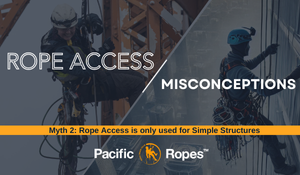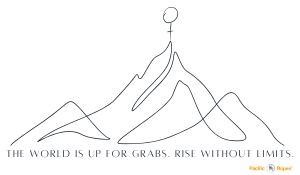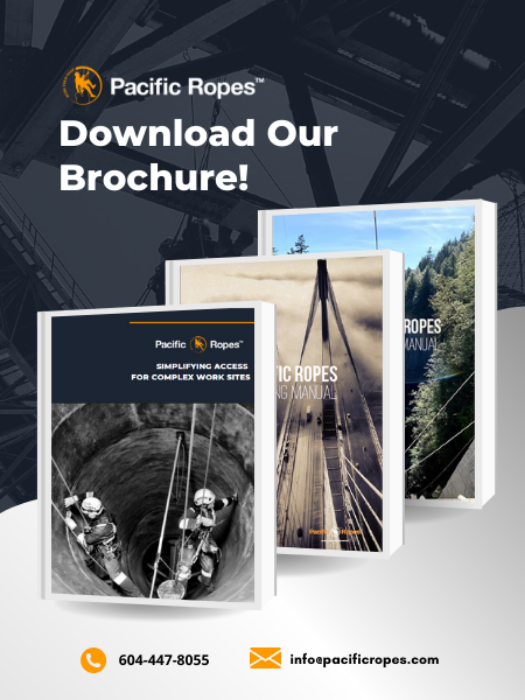
What is a bosun chair? There is a great history behind the bosun chair for work at height. Borne from the sea, the boatswain (Bosun) was the ship’s officer responsible for maintaining the sea vessel. They used a wooden seat suspended from rope rigging to access hard to reach areas. Another great example was the early uses for construction projects, including the construction of Mount Rushmore (1927 – 1939), and the Hoover Dam (1931 – 1936). While Mount Rushmore reported zero fatalities associated with Bosun chair work, Hoover dam was a very different story.
The US Bureau of Reclamation, who oversaw the Hoover Dam project and has since used bosun chair for difficult access works, has created a modern guideline for rope access work (Reclamation Guidelines for Rope Access Work - 1997), adapting to modern advances in rope access work.
In British Columbia, Worksafe BC regulates bosun chair used in occupational settings, not falling under Rope Access; but under Suspended Staging in Section 13.
Excerpt from Worksafe BC “Suspended stages are movable work platforms that are supported by line(s) from a building or structure, and can be repositioned vertically during use. They include permanent powered platforms, swing stages, and boatswain's (bosun's) chairs. Refer to OHS Guideline G13.1 - Types of work platforms.”
Worksafe BC requires that the design, construction, and installation of these systems meet standards, including: CSA Z271-10; and ANSI A120.1/ANSI A10.8 standards. Employers are responsible for ensuring compliance.
As an outdated form of rope work, this older regulation applies to the use of a specific access system as clearly defined in the Canadian Standard: CSA Z91-02. (For more information, you can purchase this standard at: http://shop.csa.ca/en/canada/machine-safety/cancsa-z91-02-r2013/invt/27017302002.).
CSA Z91-02 outlines specific requirements for bosun chair work through Worksafe BC G13.2(1)-2; and training requirements G13.2(1)-3.
The CSA standard outlines:
- Applicable standards,
- Trainer qualification requirements,
- Documentation for operators which indicate proof of training
- General safety requirements (weather restrictions, signage, overhead protections, fall protection and more)
- Equipment operation (safety requirements, maintenance and use of equipment, fall arrest equipment, anchorage, and more)
- Inspection and testing of equipment and anchors
- Documentation (equipment logs, roof plans, work plans, rigging plane, fall protection procedures).
The CSA standard requires a written or oral test, and hands on training in PPE, rigging, knots (although Worksafe BC Regulations for Suspended Work Platforms strictly prohibit knots in suspension lines for bosun chair work), anchor points, safe operation, and emergency techniques. Both classroom and practical training have their own testing requirements.
In closing, there are many key points to consider when choosing to work with a bosun chair:
* Bosun chair equipment and procedures cannot be ‘mixed’ with modern rope access equipment. Use of rope access equipment would require rope access certification and adequate program management.
* Lines supporting work platforms (OHS Section 13.9) must be kept free of knots or splices; except for terminal eye splices. Bosun chair work cannot use knots for rigging and support lines.
As with many historical items, the bosun chair has served it's purpose well in the past; but with modern advances, has quickly been outdated by modern “industrial rope access”. With 9+ rope access trade associations globally, ISO International Standards, and many great developments in equipment and techniques, it is easy to see the great improvements in modern rope access since the old days of bosun chair access.
References:
National Park Service – US Department of the Interior.
National Park Service – US Department of the Interior.
Wikipedia: https://en.wikipedia.org/wiki/Construction_of_Mount_Rushmore




